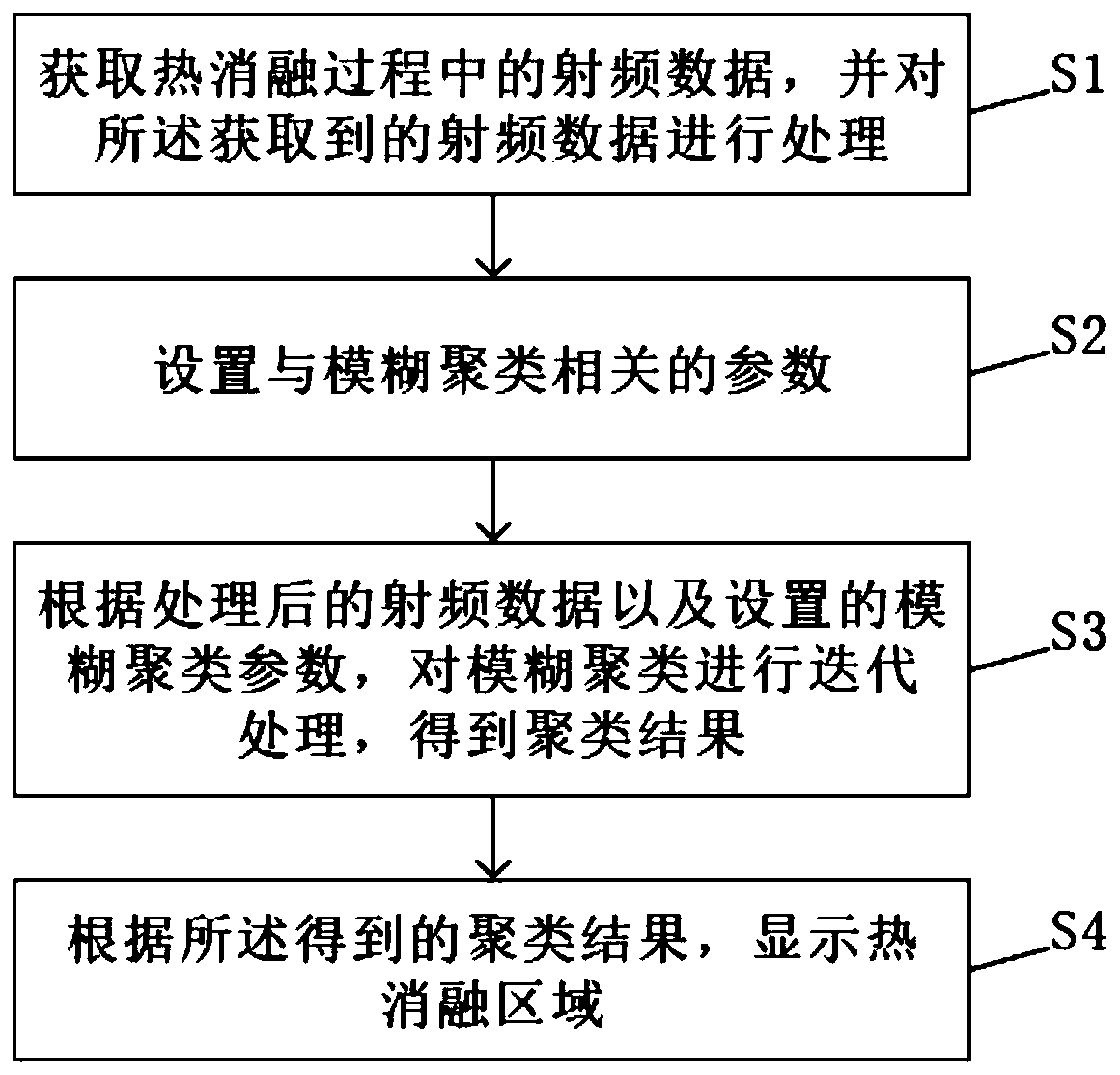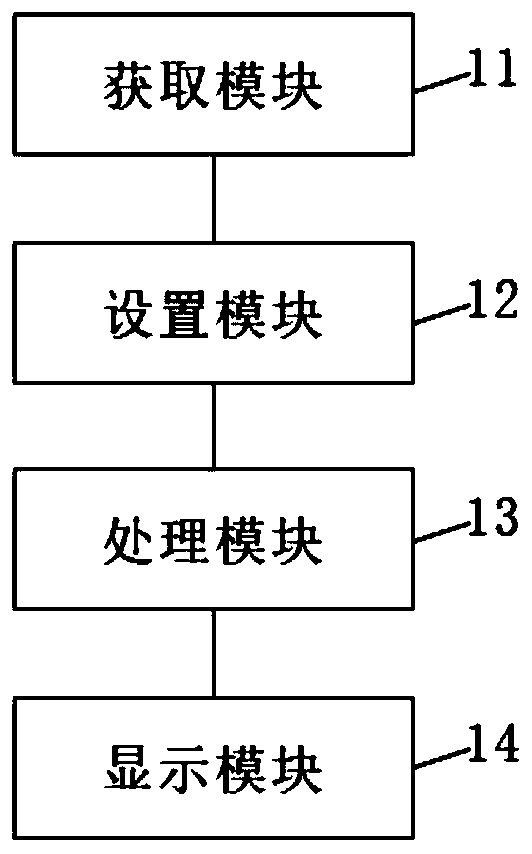Thermal ablation area monitoring method and system based on radio frequency processing and fuzzy clustering
A technology of fuzzy clustering and radio frequency processing, which is applied in fuzzy logic-based systems, image data processing, character and pattern recognition, etc., can solve problems affecting model generalization ability, dependent mark quality, etc., and achieve reliable monitoring results and eliminate differential effect
- Summary
- Abstract
- Description
- Claims
- Application Information
AI Technical Summary
Problems solved by technology
Method used
Image
Examples
Embodiment 1
[0047] This embodiment provides a thermal ablation area monitoring method based on radio frequency processing and fuzzy clustering, such as figure 1 shown, including steps:
[0048] S1. Obtain radio frequency data during thermal ablation, and process the acquired radio frequency data;
[0049] S2. Setting parameters related to fuzzy clustering;
[0050] S3. Perform iterative processing on the fuzzy clustering according to the processed radio frequency data and the set fuzzy clustering parameters to obtain a clustering result;
[0051] S4. According to the obtained clustering result, display the thermal ablation area.
[0052] In step S1, radio frequency data during the thermal ablation process are acquired, and the acquired radio frequency data are processed. Specifically include:
[0053] S11. Obtain backscattered radio frequency (RF) signals during thermal ablation;
[0054] S12. Perform detection and demodulation processing on the acquired radio frequency signal to obt...
Embodiment 2
[0090] This embodiment provides a thermal ablation area monitoring system based on radio frequency processing and fuzzy clustering, such as figure 2 shown, including:
[0091] An acquisition module 11, configured to acquire radio frequency data during thermal ablation, and process the acquired radio frequency data;
[0092] Setting module 12, is used for setting the parameter relevant with fuzzy clustering;
[0093] The processing module 13 is used to iteratively process the fuzzy clustering according to the processed radio frequency data and the set fuzzy clustering parameters to obtain a clustering result;
[0094] The display module 14 is configured to display the thermal ablation area according to the obtained clustering result.
[0095] It should be noted that the thermal ablation region monitoring system based on radio frequency processing and fuzzy clustering provided in this embodiment is similar to that in Embodiment 1, and details will not be repeated here.
[00...
PUM
 Login to View More
Login to View More Abstract
Description
Claims
Application Information
 Login to View More
Login to View More - R&D
- Intellectual Property
- Life Sciences
- Materials
- Tech Scout
- Unparalleled Data Quality
- Higher Quality Content
- 60% Fewer Hallucinations
Browse by: Latest US Patents, China's latest patents, Technical Efficacy Thesaurus, Application Domain, Technology Topic, Popular Technical Reports.
© 2025 PatSnap. All rights reserved.Legal|Privacy policy|Modern Slavery Act Transparency Statement|Sitemap|About US| Contact US: help@patsnap.com



